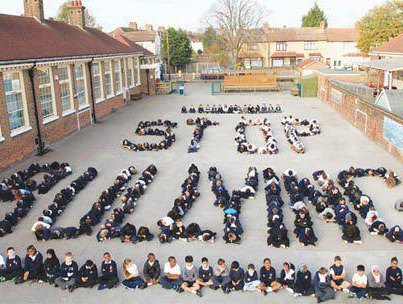Bullying: In Depth Look of the Types of Bullying, Statistics, Harassment, Violence and Victim (Part 2)

Music Video Korn: Hated
Cyberbullying Statistics
Cyberbullying refers to the act of bullying on the internet and is a new form of teenage bullying. It can include the social networking websites our teenagers use such as MySpace and Facebook, it can be through text messaging our kids cell phones, and on instant messenger's. Cyberbullying has become a serious problem among teenagers today and a form of bullying that parents, schools, and other adults aren't familiar with because they didn't have this kind of harassment growing up as in other forms of schoolyard bullying. It makes it more difficult to identify and to understand the lasting impact on our kids today. This form of bullying has led to teenagers committing suicide and is an issue that needs further attention in order to start prevention techniques and to stop the bullying currently occurring. I have even had to deal with it with my own son, although not to the extreme that others have had to.
This form of bullying affects our teenagers on a daily basis and doesn't just include saying hurtful things online. It can involve stealing someone's account information and breaking into that account to further do damage to the individual they have targeted. It includes pretending to be someone they aren't, as in making up fake profiles to gain the person's trust and later using those things the person has said against them. This was done in the case of Megan Meiers where an adult was helping her daughter gain information to see if Megan was talking about the women's daughter behind her back and pretending to be a boy that Megan thought liked her. The new form of sexting where they send a sexually explicit message or photo to someone they trust and when the person has decided they no longer like the person they forward the image to those at the kids school for instance. Even the more severe form where its adult men that are engaged in online webcam talks with underage girls and use the images they take pictures of and blackmail them into further sexual acts online or they will give out the images and try to ruin their life, as in the case of Amanda Todd.
Cyberbullying is leading to increases in teenage depression ,anxiety and even suicide. I have been doing stories on these suicide victims, now termed as bullycide victims, so people can gain some insight into what these kids are going through. Once the things are online they may never go away. They can haunt the victims throughout their life and affect every area of their life. So telling them to ignore it and if they do it will stop, isn't so affective now as it may have been when we were kids.
Some bullies online thing that their behavior towards another is actually funny, when in reality they don't understand the true consequences of what they are saying and doing and how it affects the victim. A teenager's frontal lobe isn't fully developed yet and they are unable to fully see true and lasting consequences beyond what is obvious. This changes in the later teenage years but the problem starts before they are capable of understanding and it is our job as adults to make sure this type of behavior isn't occurring. They also don't realize that what they say and do to another person online may come back and affect them as well. When interviewing for a job down the road, and a potential employer is googling them, that behavior may surface and cause them to be overlooked for a position in that company. More and more employers are doing these searches, even the Dallas Cowboy Cheerleader's in training camp for a possible selection onto the team, have been turned down for pictures they have posted of themselves that questions their character. This shouldn't be taken as lightly as it is.
More laws are changing today as well, that are making parents and their bullying children, punishable by legal means. In the case of sexting, they could be looking at charges that lead them to be on the registered sex offender list. Using fake names doesn't mean they can't get caught either, and phone traffic is traceable.
Statistics of Cyberbullying:
- Over half of teenagers have been the victim of cyberbullying.
- Over half of teenagers have also been the person that has done the cyberbullying.
- More than 1 in 3 teenagers have experienced online threats that have been directed at them.
- Over 25% of teenagers have been the victim of repeated bullying online or through their cell phones.
- More than half of the victims will not let anyone know they are a victim of cyberbullying.
- Only 1 in 10 of the victims report it to their parents.
- Less than 1 in 5 occurrences are reported to any form of law enforcement.
- Girls are more likely to engage or be a victim of cyberbullying than boys.
- More than 80% of teenagers use a cell phone on a daily basis, thus making it the most popular form of cyberbullying.
- Mean, hurtful comments and spreading rumors are the most common form of bullying used through cyberbullying.
- Boys are more likely to be physically threatened through cyberbullying than girls.
- Cyberbullying sees no race lines...it can affect each race equally.
- Cyberbullying victims are more likely to have low self-esteem. Also are more likely to contemplate killing themselves.
Ranking
| State
|
|---|---|
1
| California
|
2
| New York
|
3
| Illiniois
|
4
| Pennsylvania
|
5
| Washington
|
Worst States for Bullying

What you can do
Everyone can help someone that is a victim of cyberbullying or to help prevent their own children from engaging in such behavior.
- Talk to your kids about the serious consequences of cyberbullying behavior. I suggest not just telling them, but show them by getting online and showing them what other kids have gone through; like Amanda Todd or Megan Meier's. Explain the consequences later down the road in their own life like an employer searching on google and how their behavior can have an affect on them, even ten years later.
- Set rules and guidelines on the kind of behavior that isn't acceptable and what their consequences will be if they are caught engaging in these behaviors. An example would be that they aren't allowed to text or put online mean and hurtful comments and if they are caught doing so they will no longer be allowed to have access to a cell phone or computer for personal use.
- Encourage them to tell an adult if they are a victim of bullying online or if they know someone else that is.
- Reassure them that if they are the victim they won't be in trouble and that it isn't their fault they are the victim of bullying.
- If they are bullied, teach them how to keep the bullying as proof. They should copy the messages left online, the fake profile and the messages, and to save texts that are not appropriate.
- Inform them once they have the proof to tell an adult and to block the profile or person that is bullying them and teach them how to block numbers from sending something to their phone if its through a cell phone.
- Inform them that if it is severe that you have no issue with getting a new phone and number and restrict who is given the number.
- Instruct them never to give anyone, not even their best friend, the password to any online account and only to their parents.
- They shouldn't write down passwords were anyone could ever access that, don't keep them stored in your cell phone or Ipod and don't have them auto-saved on your personal computer in case someone can access it when staying at their home.
- Educate them of the importance of never sending or sharing something, like a photo, that they wouldn't want made public. Show how nothing is safe online and that it doesn't always go away...a perfect example is Amanda Todd and the fact she is now dead and her inappropriate picture can still be found by googling simply her name in yahoo photos.
- Remind teenagers that their conversations online are not private.
- Don't allow them to post personal information public, like on their Facebook walls because even a private profile isn't always private and its for their safety.
- Keep computers in a family living space so its easier to monitor their usage. You will know if they are on webcam chats and can randomly walk up to see what website they are on.
- Remember that teens today know how to hide things online from their parents so install software to monitor their activity and know how to use every aspect of it. Have their password so you can randomly check inside their accounts and always be a friend on their friend's list. They can post things and block you, hence the password being important.
- Don't let them have technology glued to them all day. Have them turn it off at meal times, don't let them spend all their free time on the internet, and encourage them to have hobbies and activities not connected to any form of technology. Kids are so linked to these forms of technology, fearful they will miss something pertinent to their social circles the first thing they do is wake up and check facebook.
- Its advised you wait to allow such access to these means of technology until high school and even then have full access to all of it.
Cases Reported while at school
| 37%
|
|---|---|
Bullies that bully others often
| 17%
|
Those who have made fun of a bully
| 20%
|
Had rumors or gossip spread around about them
| 10%
|
Physically bullied
| 20%
|
victim of threats
| 6%
|
Excluded from activity they wanted to be a part of
| 5%
|
Made to do what they didn't want to
| 4%
|
Bullying that occured on school property or buses or on their way home from school
| 11%
|
Bullied on school grounds
| 85%
|
Bullied victims reported
| 29%
|
Middle schoolers that reported bullying is a problem
| 44%
|
Cyberbullying
| 58%
|
Victims of cyberthreats
| 33%
|
Bullied through cell phones
| 25%
|
Those bullied that don't tell parents
| 52%
|
2012 Statistics from Bureau of Justice Statistics

Homosexual Bullying Statistics
People who are openly gay are still a huge target for any form of bullying. This was the reason Asher Brown and Jeffrey Fehr took their own lives. Both boys were very different ages and had different levels and forms of bullying in their lives that led to the same result.
According to the LGBT (Lesbian, Gay, Bi-sexual and Transgender) community has given the following statistics related to bullying:
- 1/4 of children from elementary school age through high school are victims of bullying on school property because of race, gender, sexuality, religion, and disability.
- Sexual orientation is a primary reason for being singled out for bullying at school.
- Kids that have a different orientation are 2-3 times more likely to commit suicide than any other bullied minor.
- 30% of underage suicides are related to sexual orientation.
- 5 times as more likely to miss school for feeling unsafe
- 28% of LGBT youths are pressured and drop out of school
- Some of this bullying isn't their actual orientation but what the other youths have perceived their orientation to be. So a bullied teen harassed for being gay, may actually be straight and still be a victim due to sexual orientation.
- In the last year 9 out of 10 LGBT teens have stated they are being bullied for their sexual orientation (2012 stats).
- Half of that number are physically threatened.
- They are reluctant to report the bullying for fear of escalation from the people bullying them.
- Even if reported, there is a high percentage that are being ignored by the school administration and nothing is done about it.
- Even when some at the school may respond, typically it has been noted that 1/3 of the school doesn't do anything.
- Indirect bullying is common and the bully doesn't even realize that they are doing so.
- Sometimes cyberbullying falls into this category.
- Gay bullying statistics are stated to never going down if intervention isn't in place and acted upon. Not to mention bully prevention being successful.
Bullycide Statistics
- Suicide is the leading cause of death among children under the age of 14-years-old.
- Suicide due to bullying has increased by 50% in the last 30 years.
- Bullycide refers to suicide because of bullying.
© 2012 Abby Rourk








